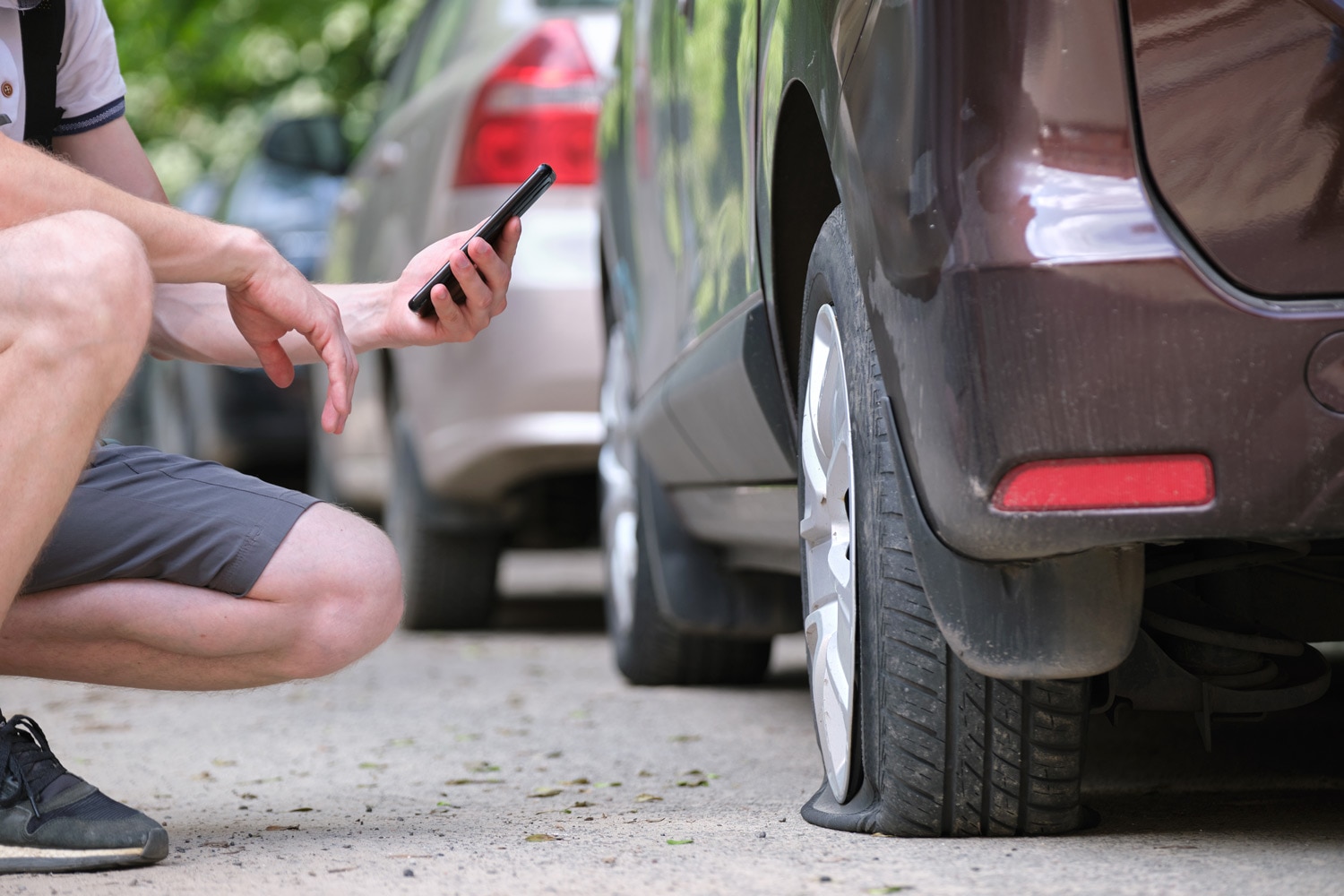How to Tell If Your Car Tire Is Patchable
You can only go so far with patches and plugs.
 Shutterstock
Shutterstock
Tires are not inexpensive. The next time you find yourself with a puncture, it's a good idea to ask a tire shop whether the tire can be repaired instead of replaced. In this article, we'll explain the methods for repairing holes in tires and look at when a patch is (and isn't) a good idea.
When to Repair Instead of Replacing a Tire
A few things can put the brakes on needing a tire repair. Generally speaking, if the hole is smaller than 1/4 inch in diameter, and it's in the tire's tread (i.e., not the shoulder or sidewall), it can usually be repaired. At that point a tire plug and patch may be a relatively inexpensive way to get back on the road.
If, however, you have a run-flat tire that's been driven with no pressure, it's been compromised and shouldn't be reused. An important part of any tire repair is getting the tire off the wheel to assess the damage, which is impossible to do from the outside alone. It's possible that the inner structure of the tire, like the belts or cords, got damaged, and your tire tech will recommend replacement instead of repair. And if it's high-performance rubber you're dealing with, especially if you take your car to a racetrack, the safest thing to do is retire the tire.
If your tire has experienced a blowout, a bulge in the sidewall, or some other catastrophic failure, the only path forward is a full replacement.
Tire Plugs Can Be Convenient in a Pinch
A tire plug is basically a little bit of sticky rubber used to fill a hole in the tread. Before placing the plug, it's necessary to ream out the hole to clean and clear it out. Then the plug material goes in and cures to plug the hole.
The convenience of a plug — you don't have to remove the tire from the rim to install one — is also a downside, as it's not possible to completely assess the damage to the tire. Plugs work best as a last (or only) resort. While they fill the hole, they don't repair or reseal the tire's inner lining, the part that keeps the air in. So a plug may fail at any time.
That said, if you're going off-roading, or camping outside of cell service range, tire plugs are good to bring along. For one thing, they work particularly well in tires running low pressure — a trick that helps improve traction off-road— and they can be a potential life-saver in case of a puncture, allowing you to limp back to civilization with minimal fuss.
Tire Patches Seal the Tire but Are Not a Complete Fix
Unlike a plug, a tire patch is applied to the inside of the tire, necessitating removal of the rubber from the rim. The inner lining must be clean and roughed up, then the patch can be applied to seal things back up.
What a patch does not address is the piece of missing tread caused by a foreign object, which means the tire's cords and belts are exposed to water. This can cause corrosion of the metal belts and weaken the cords. Tire patches by themselves aren't a great option.
Patch and Plug: The Combo
If you're going to the trouble of removing the tire from its wheel and placing a patch on the puncture, adding a plug is a no-brainer. This type of repair is approved by tire manufacturers for use on the highway, although it may void the tire's speed rating. This combination allows the two repairs to work together, covering over some of the notable downsides of each repair.
Written by humans.
Edited by humans.
 David Gluckman
David GluckmanDavid Gluckman has over a decade of experience as a writer and editor for print and digital automotive publications. He can parallel park a school bus, has a spreadsheet listing every vehicle he’s ever tested, and once drove a Lincoln Town Car 63 mph in reverse. When David’s not searching for the perfect used car, you can find him sampling the latest gimmicky foodstuffs that America has to offer.
Related articles
View more related articles